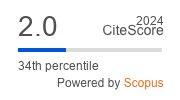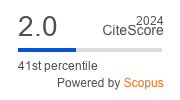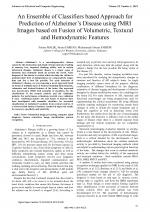| 1/2018 - 8 |
| Extra paper information in |
| Click to see author's profile in |
| Download PDF |
Author keywords
biomedical image processing, computer aided diagnosis, feature extraction, image classification, pattern recognition
References keywords
alzheimer(51), disease(38), imaging(12), functional(12), fmri(12), brain(11), diagnosis(10), dementia(8), classification(8), neuroimage(7)
Blue keywords are present in both the references section and the paper title.
About this article
Date of Publication: 2018-02-28
Volume 18, Issue 1, Year 2018, On page(s): 61 - 70
ISSN: 1582-7445, e-ISSN: 1844-7600
Digital Object Identifier: 10.4316/AECE.2018.01008
Web of Science Accession Number: 000426449500008
SCOPUS ID: 85043280771
Abstract
Alzheimer's is a neurodegenerative disease caused by the destruction and death of brain neurons resulting in memory loss, impaired thinking ability, and in certain behavioral changes. Alzheimer disease is a major cause of dementia and eventually death all around the world. Early diagnosis of the disease is crucial which can help the victims to maintain their level of independence for comparatively longer time and live a best life possible. For early detection of Alzheimer's disease, we are proposing a novel approach based on fusion of multiple types of features including hemodynamic, volumetric and textural features of the brain. Our approach uses non-invasive fMRI with ensemble of classifiers, for the classification of the normal controls and the Alzheimer patients. For performance evaluation, ten-fold cross validation is used. Individual feature sets and fusion of features have been investigated with ensemble classifiers for successful classification of Alzheimer's patients from normal controls. It is observed that fusion of features resulted in improved results for accuracy, specificity and sensitivity. |
| References | | | Cited By «-- Click to see who has cited this paper |
| [1] A. S. Association, "2016 Alzheimer's disease facts and figures," Alzheimer's & Dementia, vol. 12(4), pp. 459-509, 2016. [CrossRef] [SCOPUS Times Cited 2170] [2] A. Golby, G. Silverberg, E. Race, S. Gabrieli, J. O'Shea, et al., "Memory encoding in Alzheimer's disease: an fMRI study of explicit and implicit memory," Brain, vol. 128, pp. 773-787, 2005. [CrossRef] [SCOPUS Times Cited 228] [3] M. S. Albert, S. T. DeKosky, D. Dickson, B. Dubois, H. H. Feldman, et al., "The diagnosis of mild cognitive impairment due to Alzheimer's disease: Recommendations from the National Institute on Aging-Alzheimer's Association workgroups on diagnostic guidelines for Alzheimer's disease," Alzheimer's & dementia, vol. 7, pp. 270-279, 2011. [CrossRef] [SCOPUS Times Cited 8315] [4] C. R. Jack, M. S. Albert, D. S. Knopman, G. M. McKhann, R. A. Sperling, et al., "Introduction to the recommendations from the National Institute on Aging-Alzheimer's Association workgroups on diagnostic guidelines for Alzheimer's disease," Alzheimer's & Dementia, vol. 7, pp. 257-262, 2011. [CrossRef] [SCOPUS Times Cited 1558] [5] G. M. McKhann, D. S. Knopman, H. Chertkow, B. T. Hyman, C. R. Jack, et al., "The diagnosis of dementia due to Alzheimer's disease: Recommendations from the National Institute on Aging-Alzheimer's Association workgroups on diagnostic guidelines for Alzheimer's disease," Alzheimer's & dementia, vol. 7, pp. 263-269, 2011. [CrossRef] [SCOPUS Times Cited 12258] [6] R. A. Sperling, P. S. Aisen, L. A. Beckett, D. A. Bennett, S. Craft, et al., "Toward defining the preclinical stages of Alzheimer's disease: Recommendations from the National Institute on Aging-Alzheimer's Association workgroups on diagnostic guidelines for Alzheimer's disease," Alzheimer's & dementia, vol. 7, pp. 280-292, 2011. [CrossRef] [SCOPUS Times Cited 5731] [7] S. G. Mueller, M. W. Weiner, L. J. Thal, R. C. Petersen, C. R. Jack, et al., "Ways toward an early diagnosis in Alzheimer's disease: the Alzheimer's Disease Neuroimaging Initiative (ADNI)," Alzheimer's & Dementia, vol. 1, pp. 55-66, 2005. [CrossRef] [SCOPUS Times Cited 989] [8] K. A. Johnson, N. C. Fox, R. A. Sperling, and W. E. Klunk, "Brain imaging in Alzheimer disease," Cold Spring Harbor perspectives in medicine, vol. 2, p. a006213, 2012. [CrossRef] [SCOPUS Times Cited 548] [9] L. Mosconi, M. Brys, L. Glodzik-Sobanska, S. De Santi, H. Rusinek, et al., "Early detection of Alzheimer's disease using neuroimaging," Experimental gerontology, vol. 42, pp. 129-138, 2007. [CrossRef] [SCOPUS Times Cited 151] [10] J. R. Petrella, R. E. Coleman, and P. M. Doraiswamy, "Neuroimaging and Early Diagnosis of Alzheimer Disease: A Look to the Future 1," Radiology, vol. 226, pp. 315-336, 2003. [CrossRef] [SCOPUS Times Cited 356] [11] S. Farhan, M. A. Fahiem, and H. Tauseef, "An ensemble-of-classifiers based approach for early diagnosis of Alzheimer's disease: classification using structural features of brain images," Computational and mathematical methods in medicine, vol. 2014, 2014. [12] M. D'Esposito, E. Zarahn, G. K. Aguirre, and B. Rypma, "The effect of normal aging on the coupling of neural activity to the bold hemodynamic response," Neuroimage, vol. 10, pp. 6-14, 1999. [CrossRef] [SCOPUS Times Cited 418] [13] R. L. Buckner, A. Z. Snyder, A. L. Sanders, M. E. Raichle, and J. C. Morris, "Functional brain imaging of young, nondemented, and demented older adults," 2006 [14] S. M. Smith, P. M. Matthews, and P. Jezzard, Functional MRI: an introduction to methods: Oxford university press, 2001 [15] S. S. Bassett, D. M. Yousem, C. Cristinzio, I. Kusevic, M. A. Yassa, et al., "Familial risk for Alzheimer's disease alters fMRI activation patterns," Brain, vol. 129, pp. 1229-1239, 2006. [CrossRef] [SCOPUS Times Cited 146] [16] S. Y. Bookheimer, M. H. Strojwas, M. S. Cohen, A. M. Saunders, M. A. Pericak-Vance, et al., "Patterns of brain activation in people at risk for Alzheimer's disease," New England journal of medicine, vol. 343, pp. 450-456, 2000. [CrossRef] [SCOPUS Times Cited 1168] [17] K. R. Thulborn, C. Martin, and J. T. Voyvodic, "Functional MR imaging using a visually guided saccade paradigm for comparing activation patterns in patients with probable Alzheimer's disease and in cognitively able elderly volunteers," American Journal of Neuroradiology, vol. 21, pp. 524-531, 2000. [18] R. L. Buckner, "Event-related fMRI and the hemodynamic response," Human brain mapping, vol. 6, pp. 373-377, 1998. [CrossRef] [SCOPUS Times Cited 264] [19] A. C. Burggren and S. Y. Bookheimer, "Structural and functional neuroimaging in Alzheimer's disease: an update," Current topics in medicinal chemistry, vol. 2, pp. 385-393, 2002. [CrossRef] [SCOPUS Times Cited 22] [20] S.-J. Li, Z. Li, G. Wu, M.-J. Zhang, M. Franczak, et al., "Alzheimer disease: evaluation of a functional mr imaging index as a marker 1," Radiology, vol. 225, pp. 253-259, 2002. [CrossRef] [SCOPUS Times Cited 259] [21] G. Grön, D. Bittner, B. Schmitz, A. P. Wunderlich, and M. W. Riepe, "Subjective memory complaints: objective neural markers in patients with Alzheimer's disease and major depressive disorder," Annals of neurology, vol. 51, pp. 491-498, 2002. [CrossRef] [SCOPUS Times Cited 111] [22] M. Grossman, P. Koenig, C. DeVita, G. Glosser, P. Moore, et al., "Neural basis for verb processing in Alzheimer's disease: an fMRI study," Neuropsychology, vol. 17, p. 658, 2003. [CrossRef] [SCOPUS Times Cited 39] [23] C. Lustig, A. Z. Snyder, M. Bhakta, K. C. O'Brien, M. McAvoy, et al., "Functional deactivations: change with age and dementia of the Alzheimer type," Proceedings of the National Academy of Sciences, vol. 100, pp. 14504-14509, 2003. [CrossRef] [SCOPUS Times Cited 640] [24] R. Sperling, J. Bates, E. Chua, A. Cocchiarella, D. Rentz, et al., "fMRI studies of associative encoding in young and elderly controls and mild Alzheimer's disease," Journal of Neurology, Neurosurgery & Psychiatry, vol. 74, pp. 44-50, 2003. [CrossRef] [SCOPUS Times Cited 408] [25] M. D. Greicius, G. Srivastava, A. L. Reiss, and V. Menon, "Default-mode network activity distinguishes Alzheimer's disease from healthy aging: evidence from functional MRI," Proceedings of the National Academy of Sciences of the United States of America, vol. 101, pp. 4637-4642, 2004. [CrossRef] [SCOPUS Times Cited 3155] [26] J. R. Petrella, L. Wang, S. Krishnan, M. J. Slavin, S. E. Prince, et al., "Cortical Deactivation in Mild Cognitive Impairment: High-Field-Strength Functional MR Imaging 1," Radiology, vol. 245, pp. 224-235, 2007. [CrossRef] [SCOPUS Times Cited 134] [27] K. Supekar, V. Menon, D. Rubin, M. Musen, and M. D. Greicius, "Network analysis of intrinsic functional brain connectivity in Alzheimer's disease," PLoS Comput Biol, vol. 4, p. e1000100, 2008. [CrossRef] [SCOPUS Times Cited 976] [28] M. Liu, D. Zhang, D. Shen, and A. s. D. N. Initiative, "Ensemble sparse classification of Alzheimer's disease," NeuroImage, vol. 60, pp. 1106-1116, 2012. [CrossRef] [SCOPUS Times Cited 287] [29] N. Belmokhtar and N. Benamrane, "Classification of Alzheimer's disease from 3D structural MRI data," Age, vol. 78, pp. 69-96, 2012. [30] E. Dinesh, M. S. Kumar, M. Vigneshwar, and T. Mohanraj, "Instinctive classification of Alzheimer's disease using FMRI, pet and SPECT images," in Intelligent Systems and Control (ISCO), 2013 7th International Conference on, 2013, pp. 405-409. [CrossRef] [SCOPUS Times Cited 14] [31] S. Farhan, M. A. Fahiem, F. Tahir, and H. Tauseef, "A Comparative Study of Neuroimaging and Pattern Recognition Techniques for Estimation of Alzheimer's," Life Science Journal, vol. 10, 2013. [32] J. Ashburner, G. Barnes, C. Chen, J. Daunizeau, G. Flandin, et al., "SPM8 manual," Functional Imaging Laboratory, Institute of Neurology, 2008, 41, pp. 25-58. [33] A. Collignon, F. Maes, D. Delaere, D. Vandermeulen, P. Suetens, et al., "Automated multi-modality image registration based on information theory," in Information processing in medical imaging, 1995, pp. 263-274. [34] E. E. Tripoliti, D. I. Fotiadis, and M. Argyropoulou, "A supervised method to assist the diagnosis of Alzheimer's disease based on functional magnetic resonance imaging," in 2007 29th Annual International Conference of the IEEE Engineering in Medicine and Biology Society, 2007, pp. 3426-3429. [CrossRef] [SCOPUS Times Cited 15] [35] E. E. Tripoliti, D. I. Fotiadis, M. Argyropoulou, and G. Manis, "A six stage approach for the diagnosis of the Alzheimer's disease based on fMRI data," Journal of biomedical informatics, vol. 43, pp. 307-320, 2010. [CrossRef] [SCOPUS Times Cited 68] [36] S. Sandor and R. Leahy, "Surface-based labeling of cortical anatomy using a deformable atlas," IEEE transactions on medical imaging, vol. 16, pp. 41-54, 1997. [CrossRef] [SCOPUS Times Cited 233] [37] D. W. Shattuck, S. R. Sandor-Leahy, K. A. Schaper, D. A. Rottenberg, and R. M. Leahy, "Magnetic resonance image tissue classification using a partial volume model," NeuroImage, vol. 13, pp. 856-876, 2001. [CrossRef] [SCOPUS Times Cited 868] [38] J. D. Lee, S. C. Su, C. H. Huang, W. C. Xu, and Y. Y. Wei, "Using Volume Features and Shape Features for Alzheimer's Disease Diagnosis," in Innovative Computing, Information and Control (ICICIC), 2009 Fourth International Conference on, 2009, pp. 437-440. [CrossRef] [SCOPUS Times Cited 6] [39] D. Schmitter, A. Roche, B. Marechal, D. Ribes, A. Abdulkadir, et al., "An evaluation of volume-based morphometry for prediction of mild cognitive impairment and Alzheimer's disease," NeuroImage: Clinical, vol. 7, pp. 7-17, 2015. [CrossRef] [SCOPUS Times Cited 175] [40] S.-T. Yang, J.-D. Lee, C.-H. Huang, J.-J. Wang, W.-C. Hsu, et al., "Computer-Aided Diagnosis of Alzheimer's Disease Using Multiple Features with Artificial Neural Network," in PRICAI 2010: Trends in Artificial Intelligence: 11th Pacific Rim International Conference on Artificial Intelligence, Daegu, Korea, August 30September 2, 2010. Proceedings, B.-T. Zhang and M. A. Orgun, Eds., ed Berlin, Heidelberg: Springer Berlin Heidelberg, 2010, pp. 699-705. [CrossRef] [SCOPUS Times Cited 12] [41] W. H. Nailon, "Texture analysis methods for medical image characterisation. In Biomedical imaging, InTech, 2010. [CrossRef] [43] A. M. Hansen, D. Jeske, and W. Kirsch, "A chi-square goodness-of-fit test for autoregressive logistic regression models with applications to patient screening," Journal of biopharmaceutical statistics, vol. 25, pp. 89-108, 2015. [CrossRef] [SCOPUS Times Cited 5] [44] L. Rokach, "Ensemble-based classifiers," Artificial Intelligence Review, vol. 33, pp. 1-39, 2010. [CrossRef] [SCOPUS Times Cited 2231] [45] T. G. Dietterich, "Ensemble methods in machine learning," in International workshop on multiple classifier systems, 2000, pp. 1-15. [CrossRef] [SCOPUS Times Cited 5823] [46] S. Sarraf and G. Tofighi, "Deep Learning-based Pipeline to Recognize Alzheimer' s Disease using fMRI Data," bioRxiv, p. 066910, 2016. [47] A. Khazaee, A. Ebrahimzadeh, A. Babajani-Feremi, and A. s. D. N. Initiative, "Classification of patients with MCI and AD from healthy controls using directed graph measures of resting-state fMRI," Behavioural Brain Research, 2016. [48] E. Challis, P. Hurley, L. Serra, M. Bozzali, S. Oliver, et al., "Gaussian process classification of Alzheimer's disease and mild cognitive impairment from resting-state fMRI," NeuroImage, vol. 112, pp. 232-243, 2015. [CrossRef] [SCOPUS Times Cited 163] [49] R. Sampath and A. Saradha, "Alzheimer," Research Journal of Applied Sciences, Engineering and Technology, vol. 10, pp. 29-34, 2015. [CrossRef] [SCOPUS Times Cited 9] [50] A. Khazaee, A. Ebrahimzadeh, and A. Babajani-Feremi, "Automatic classification of Alzheimer's disease with resting-state fMRI and graph theory," in Biomedical Engineering (ICBME), 2014 21th Iranian Conference on, 2014, pp. 252-257. [CrossRef] [SCOPUS Times Cited 8] [51] C.-Y. Wee, P.-T. Yap, D. Zhang, K. Denny, J. N. Browndyke, et al., "Identification of MCI individuals using structural and functional connectivity networks," Neuroimage, vol. 59, pp. 2045-2056, 2012. [CrossRef] [SCOPUS Times Cited 347] [52] Z. Dai, C. Yan, Z. Wang, J. Wang, M. Xia, et al., "Discriminative analysis of early Alzheimer's disease using multi-modal imaging and multi-level characterization with multi-classifier (M3)," Neuroimage, vol. 59, pp. 2187-2195, 2012. [CrossRef] [SCOPUS Times Cited 257] [53] E. E. Tripoliti, D. I. Fotiadis, and M. Argyropoulou, "An automated supervised method for the diagnosis of Alzheimer's disease based on fMRI data using weighted voting schemes," in International Workshop on Imaging Systems and Techniques, 2008. [CrossRef] [SCOPUS Times Cited 12] Web of Science® Citations for all references: 0 SCOPUS® Citations for all references: 50,577 TCR Web of Science® Average Citations per reference: 0 SCOPUS® Average Citations per reference: 954 ACR TCR = Total Citations for References / ACR = Average Citations per Reference We introduced in 2010 - for the first time in scientific publishing, the term "References Weight", as a quantitative indication of the quality ... Read more Citations for references updated on 2025-07-01 19:53 in 278 seconds. Note1: Web of Science® is a registered trademark of Clarivate Analytics. Note2: SCOPUS® is a registered trademark of Elsevier B.V. Disclaimer: All queries to the respective databases were made by using the DOI record of every reference (where available). Due to technical problems beyond our control, the information is not always accurate. Please use the CrossRef link to visit the respective publisher site. |
Faculty of Electrical Engineering and Computer Science
Stefan cel Mare University of Suceava, Romania
All rights reserved: Advances in Electrical and Computer Engineering is a registered trademark of the Stefan cel Mare University of Suceava. No part of this publication may be reproduced, stored in a retrieval system, photocopied, recorded or archived, without the written permission from the Editor. When authors submit their papers for publication, they agree that the copyright for their article be transferred to the Faculty of Electrical Engineering and Computer Science, Stefan cel Mare University of Suceava, Romania, if and only if the articles are accepted for publication. The copyright covers the exclusive rights to reproduce and distribute the article, including reprints and translations.
Permission for other use: The copyright owner's consent does not extend to copying for general distribution, for promotion, for creating new works, or for resale. Specific written permission must be obtained from the Editor for such copying. Direct linking to files hosted on this website is strictly prohibited.
Disclaimer: Whilst every effort is made by the publishers and editorial board to see that no inaccurate or misleading data, opinions or statements appear in this journal, they wish to make it clear that all information and opinions formulated in the articles, as well as linguistic accuracy, are the sole responsibility of the author.



